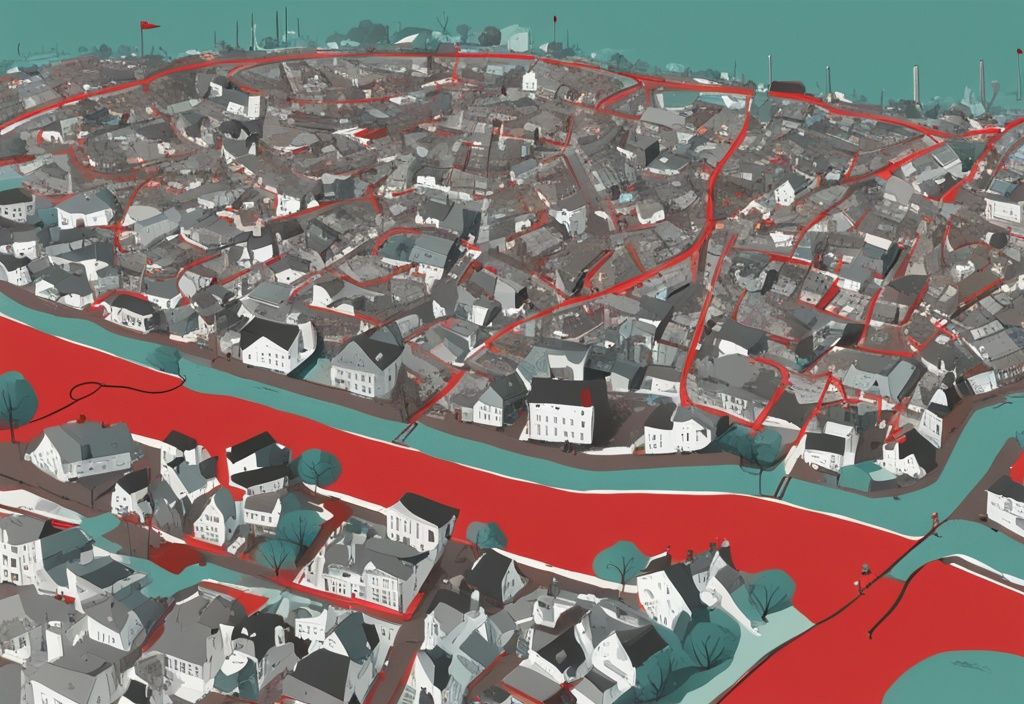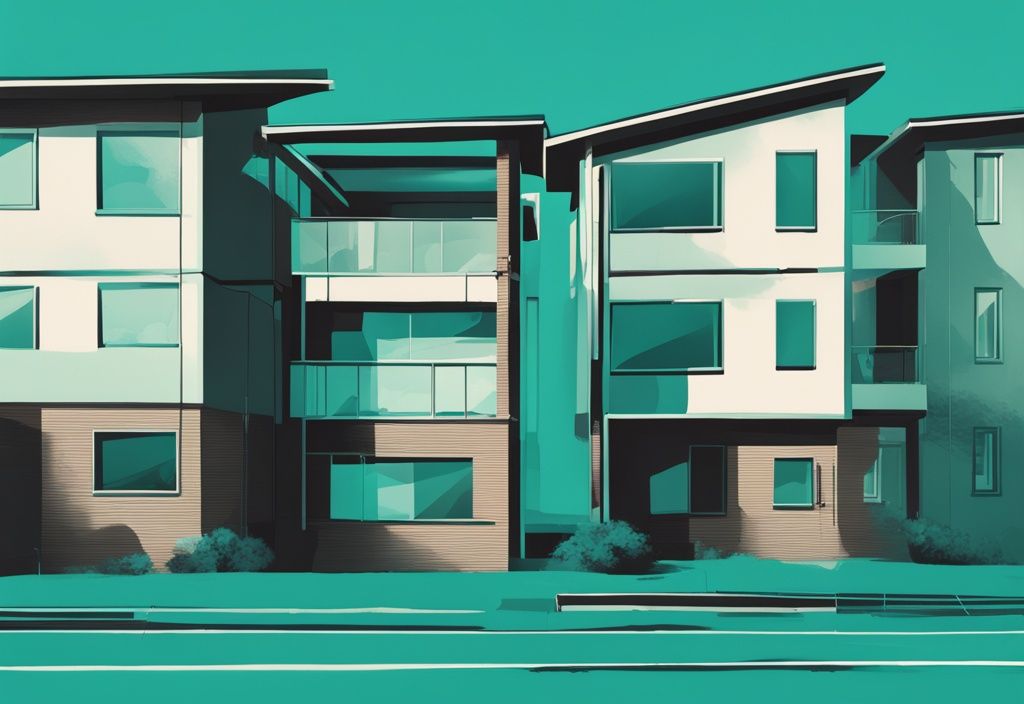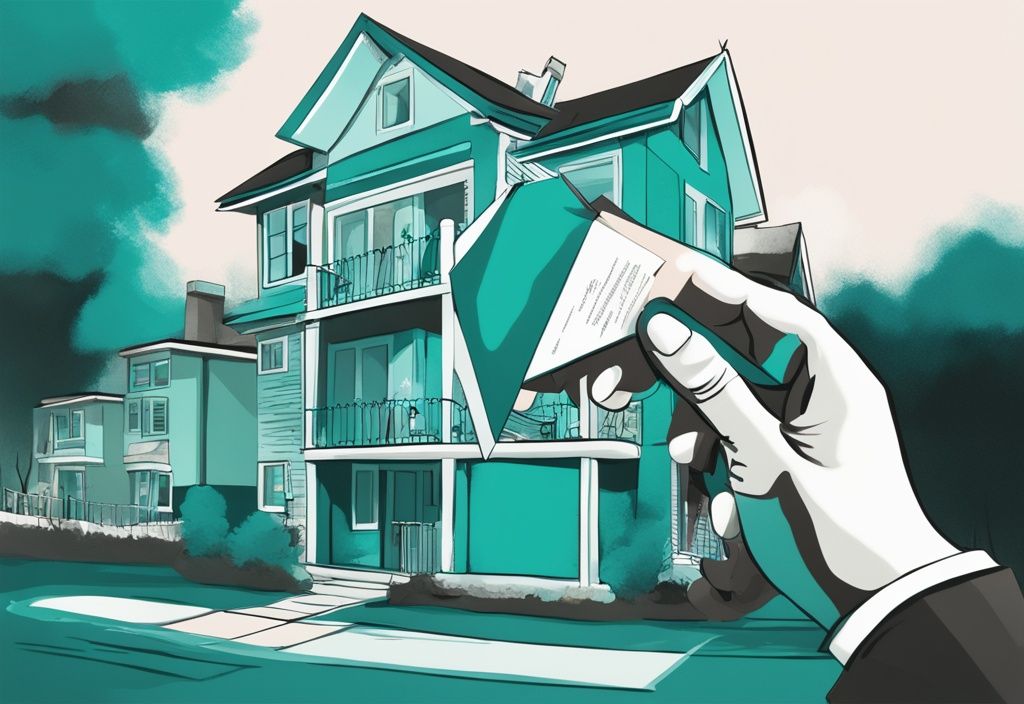Ever wondered what redlining in real estate means and why it holds such historical significance? Well, my friend, you’re in the right place! Redlining is a dark shadow from America’s history, based in the 1930s, and is infamously known for its detrimental effects on minority communities. It’s like a long-lasting stain on a favorite shirt – an unwelcome artifact that still influences our present.
This article offers a deep dive into the complex matter of redlining in real estate – its roots, its undesired heritage, and the incredible efforts rising up to challenge it. Like a historic tour, we’ll navigate together the vivid scenes of this systematic financial discrimination, the ongoing struggle it instilled, and the modern fight for equality in the housing market.
Get ready to be enlightened, empowered and maybe, a bit stirred up, as we traverse the twisted terrain of redlining’s legacy. It’s time to turn hidden corners into illuminating insights for a better, fairer present.
Introduction to Redlining in Real Estate
Redlining, emerging as a deeply discriminatory practice in real estate, profoundly shaped neighborhoods and demographics by denying or limiting financial services based on racial composition. Imagine trying to buy a home, but being consistently rejected for mortgages or loans simply because of where you live. This was the reality for many, particularly Black Americans and other minority groups, dating back to the 1930s.
The roots of redlining lie in its systemic rejection of minorities, spotlighted by maps that marked neighborhoods with a majority of Black residents as high-risk or undesirable. This led to severe limitations on homeownership opportunities for these communities. By creating clear divides, redlining not only enforced racial segregation but contributed significantly to the economic decline of affected areas.
From a practical standpoint, lenders, heavily influenced by these discriminatory maps, refused to provide financial support to certain neighborhoods. This stunted growth and development, creating entrenched barriers to wealth accumulation for Black families and other minorities. The ripple effect? Socio-economic disadvantages that still echo through generations today.
Today, understanding what is redlining in real estate involves recognizing its deep-seated impact on racial inequality and housing disparities. While the loudest forms of redlining are now outlawed, its legacy is boldly written in the persistent wealth gap and the ongoing challenges faced by minority communities in accessing fair housing opportunities.
The history and fallout of redlining remind us just how pivotal equitable access to real estate is in shaping our society. By acknowledging these past missteps, we can better approach and rectify the systemic issues that continue to affect home buying and financial inclusivity. Understanding the role of professionals, such as real estate brokers, is crucial in this journey. The journey in understanding redlining doesn’t end here. It’s an ongoing examination of past policies and their long-lasting effects, ensuring that the harsh lessons of history guide us towards a more equitable future in real estate.
The Origins and Historic Background of Redlining
The Home Owners’ Loan Corporation (HOLC) and Its Role in Redlining
If you’re diving into what is redlining in real estate, the story begins with the Home Owners’ Loan Corporation (HOLC). Formed in the 1930s, this federal agency aimed to tackle widespread foreclosures during the Great Depression. One of their strategies was to create color-coded maps assessing mortgage risks, which they believed would help stabilize the housing market.
On these maps, areas marked in bright red came to be known as “redlined” zones, signaling neighborhoods considered too risky for investment. Unfortunately, these decisions weren’t just about economic factors. They were greatly influenced by the racial makeup of communities. Predominantly Black neighborhoods were almost always marked in red. This systematic labeling institutionalized racial discrimination, making it virtually impossible for Black Americans and other minorities to access mortgage financing. As a result, poverty and segregation were perpetuated in these communities.
How Government and Private Sector Contributed to Redlining
Government policies played a significant role in amplifying the effects of what is redlining in real estate. The Federal Housing Administration (FHA) and other agencies adopted HOLC’s redlining maps and criteria, embedding them into their guidelines. A pertinent example is the Servicemen’s Readjustment Act of 1944, known as the G.I. Bill. Despite its benefits, the bill often excluded Black veterans because it adhered to redlining practices.
Seeing the government’s stance, private lenders followed suit. They either outright denied loans to residents of redlined areas or imposed prohibitively high-interest rates. This collaboration between government bodies and financial institutions entrenched racial segregation, severely hindering the socio-economic advancement of minority communities. With these discriminatory practices firmly in place, the racial divisions etched by redlining maps had enduring impacts on housing opportunities and community development.
Significant Impacts of Redlining in Real Estate
Redlining has had a profound and lasting impact on the landscape of real estate and society in general. From fostering segregation to affecting property values and wealth distribution, its legacy is both deep and wide-reaching.
Link Between Redlining and Segregation in Real Estate
To truly comprehend what is redlining in real estate, it’s essential to grasp how it perpetuated racial segregation. Imagine post-World War II America, where redlining systematically restricted minorities from purchasing homes in largely white, suburban neighborhoods. This wasn’t just chance; it stemmed from racial criteria embedded in risk assessments by agencies like the Home Owners’ Loan Corporation (HOLC). When these agencies marked minority neighborhoods in red, these areas were tagged as high-risk, making it nearly impossible for residents to secure mortgages.
One crucial component to understanding these barriers is the concept of a Metropolitan Statistical Area (MSA), which plays a significant role in real estate and demographics. Find out what MSA stands for in real estate to better grasp the implications of these institutional practices.
What followed was nothing short of devastating. Institutional barriers effectively locked African Americans and other minorities out of a wide range of housing options. This confinement led to concentrated poverty in urban settings as minority groups found themselves restricted to underfunded and neglected neighborhoods. While suburban areas thrived with infrastructure and investment, urban zones fell into disrepair, creating a glaring disparity in living conditions. Redlining didn’t just geographically confine people; it shackled their socio-economic mobility, reinforcing a vicious cycle of poverty and segregation.
The Influence of Redlining on Property Value and Wealth Disparity
The fallout of what is redlining in real estate reverberated deeply into property values and wealth accumulation. Properties in redlined areas found their values plummeting due to deliberate divestment from both public and private sectors. Investors and financial institutions steered clear of these “hazardous” zones, stripping them of essential funding for home maintenance, community services, and new developments.
This wasn’t just about property values dropping. The decline created a domino effect on wealth accumulation for residents. Home equity is a significant source of wealth in the U.S., often serving as a financial legacy for future generations. By depressing home values, redlining directly curbed the ability of minority families to build and pass on wealth, entrenching economic disparities. While white families in non-redlined areas could construct substantial equity, minority families saw their financial opportunities erode.
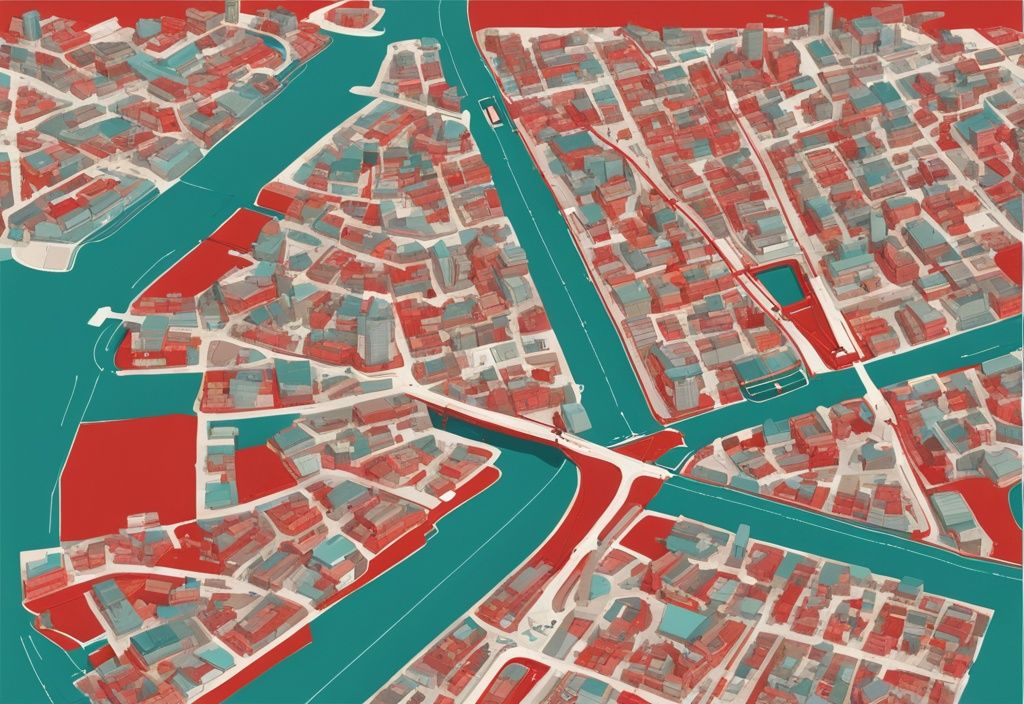
It’s a legacy that continues to haunt us. Even today, studies indicate that formerly redlined neighborhoods deal with lingering effects: lower property values, diminished economic opportunities, and higher interest rates on loans. This perpetuates the racial wealth gap, impacting generations beyond those initially affected by redlining policies. Thus, understanding what is redlining in real estate involves recognizing it not just as a historical injustice but as an ongoing challenge that demands continuous remedial efforts.
Important Legislation Addressing Redlining
The fight against redlining in real estate has been long and arduous, but key pieces of legislation have made significant strides in creating a fairer, more inclusive market. Let’s explore two crucial laws that have shaped the landscape.
Fair Housing Act: An Answer to Redlining
The Fair Housing Act of 1968, which prohibited discrimination concerning the sale, rental, and financing of housing based on race, religion, national origin, or sex, marks a crucial milestone in tackling discriminatory practices within the real estate industry. For more information on this landmark legislation, visit this resource. If you’ve ever wondered what is redlining in real estate, this landmark law shines a light on the issue and represents a definitive legislative action against it.
Introduced to dismantle systemic barriers minorities faced in securing housing, the Fair Housing Act aims to prohibit discrimination in various housing-related activities, including renting, buying, and obtaining home financing. This applies to race, color, religion, sex, and national origin.
By mandating equal housing opportunities, the Act directly targets redlining practices that historically limited minority communities’ access to financial services. The goal was to create a level playing field, ushering in inclusivity and fairness within the real estate market.
Enforcement of the Act is managed through the Department of Housing and Urban Development (HUD), which ensures compliance and addresses any grievances related to housing discrimination. This oversight helps maintain a consistent approach toward eliminating unfair practices.
The Community Reinvestment Act’s Impact on Redlining Practices
The Community Reinvestment Act (CRA) of 1977 further reinforced efforts to eradicate redlining, transforming what was once a dismissive practice into a critical social issue needing urgent remediation.
This Act emboldens financial institutions to meet the credit needs of all communities they serve, particularly focusing on low- and moderate-income neighborhoods which had been historically marginalized.
Banks are held accountable under the CRA by having their performances evaluated based on how well they serve these communities. Ratings are assigned, significantly impacting their business decisions, such as expanding branches or merging with other institutions.
A poor rating under the CRA can stifle a bank’s growth and operations, incentivizing them to rectify discriminatory practices and invest equitably across all communities. This form of accountability ensures proactive measures against redlining, promoting fair access to financial services, and fostering community development.
Both the Fair Housing Act and the Community Reinvestment Act play pivotal roles in eradicating redlining, ensuring every community can access the financial resources necessary for growth and prosperity.
Redlining in Today’s Real Estate Landscape
Redlining is a term that dates back to the mid-20th century, referring to discriminatory practices in real estate and lending. Today, it’s vital to explore its modern manifestations and the ongoing battles against these biases in the real estate sector.
Exploring the Reality of Digital Redlining
You might be wondering what is redlining in real estate exactly and how it affects us today. Well, even though traditional redlining is illegal, we’ve stumbled into a new challenge—digital redlining. With the rise of technology, algorithms now play a significant role in online lending and real estate advertising. These high-tech tools sift through massive amounts of data to customize services and ads, but here’s where it gets tricky. Sometimes, these algorithms inadvertently carry over the same old racial and socio-economic biases, excluding certain groups from opportunities.
This digital bias means that some communities continue to struggle with equitable access to housing, thereby echoing the discriminatory practices of the past in a modern, technological form. It’s a bit like using a map where some areas are marked ‘no-go’ based on outdated social biases, even though you’ve never been told that outright.
Efforts to End Modern-Day Redlining
Fortunately, we’re not standing still on this issue. The fight against discriminatory lending is gaining traction, thanks to initiatives like the Department of Justice’s Combating Redlining Initiative, launched in 2021. This initiative ramps up the battle against ongoing biased lending practices through strict enforcement of anti-discrimination laws.
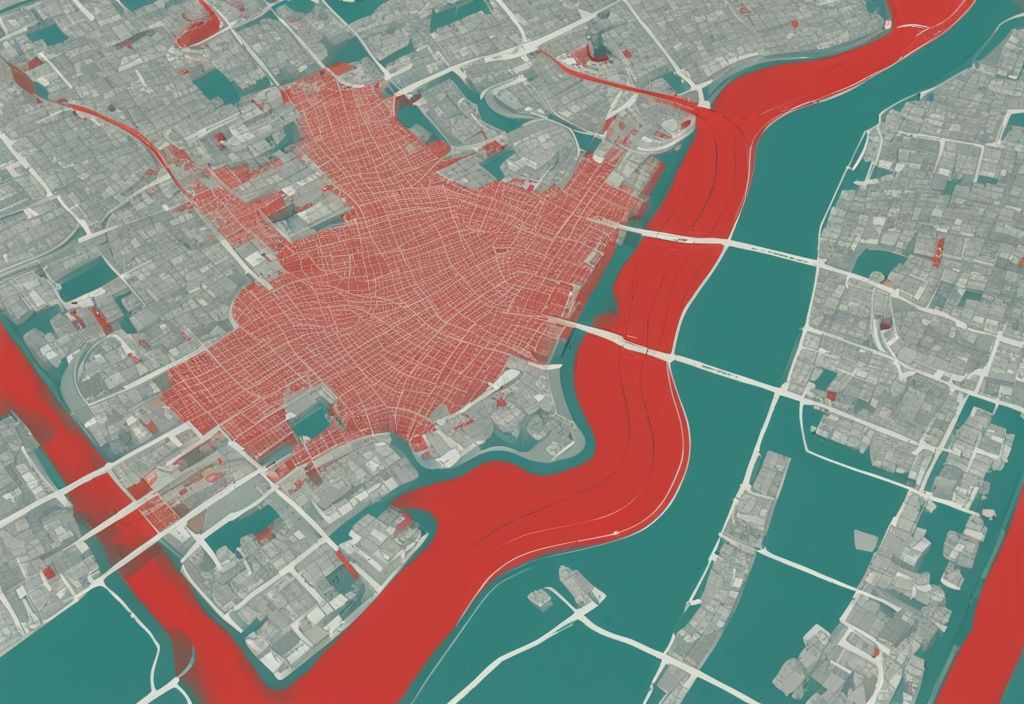
Moreover, key players in housing finance, such as Fannie Mae and Freddie Mac, are making strides by updating their underwriting standards. They’re now incorporating alternative credit data to make homeownership more accessible to a wider range of applicants, particularly those in nonwhite communities. It’s like changing the rulebook to ensure everyone gets a fair game.
Beyond that, education is a powerful tool in this fight. Fair housing education programs aim to enlighten both consumers and real estate professionals about equitable lending practices. By spreading knowledge and fostering understanding, these programs work diligently to chip away at the lingering effects of redlining in today’s digital world.
Enduring Effects of Redlining on Real Estate
The practice of redlining in real estate has had lasting and profound impacts on various aspects of housing and community development, which are still noticeable today. Understanding what is redlining in real estate allows us to see how these historical practices continue to affect property values and homeownership rates. Here’s a closer look:
Property Values in Redlined Areas: A Closer Look
The legacy of redlining has left a lasting footprint on property values in historically redlined neighborhoods. Identified as high-risk for mortgage lenders, these areas have struggled to keep up with their non-redlined counterparts. The primary reason? A chronic lack of investment from both public and private sectors over the years.
Imagine trying to build a thriving community without proper funding for infrastructure, schools, or essential services. It’s no wonder these neighborhoods face an uphill battle in attracting new homeowners and businesses. The end result is a persistent cycle of lower property valuations.
But it’s not just the lack of investment. The stigma surrounding redlined areas has also played a detrimental role. Investors and potential homeowners are often deterred by the negative connotations, further widening the gap in property values. With fewer amenities, weaker schools, and overall lower neighborhood appeal, it’s a stark contrast to more affluent areas.
Understanding what is redlining in real estate becomes vital to grasp how historical discrimination continues to shape the financial landscape of these communities.
Examining Homeownership Rates Amidst Redlining History
The historical practice of redlining has also heavily influenced homeownership rates, especially among Black Americans. Compared to white Americans, the disparities are clear. Redlining systematically denied minority groups the chance to secure mortgages and loans, erecting long-term barriers to homeownership.
Think of it as a maze with no exit for many minority families looking to own a home. Financial hurdles were just the tip of the iceberg. Redlining also restricted access to neighborhoods with better amenities—a crucial element for community investment and wealth accumulation. Without access to high-value areas with superior schools and amenities, minority communities faced sustained economic disadvantages.
In essence, redlining created a cycle of poverty and limited economic mobility that’s tough to break, despite new housing policies and anti-discrimination laws. Delving into what is redlining in real estate sheds light on the entrenched disparities we still strive to dismantle today.
Gaining Ground: Strategies to Counter Redlining’s Legacy
Investing in historically redlined communities is crucial for reversing decades of discriminatory practices and fostering equitable growth. To counteract the negative impacts of what is redlining in real estate, targeted investment in infrastructure is essential. Enhancing public transportation, building health care facilities, and upgrading utilities generate immediate improvements in residents’ quality of life. Moreover, investing in housing developments tailored to the needs of these communities can provide safe and affordable living conditions.
Equitable distribution of public resources can further enhance economic conditions. For instance, initiatives to improve schools and libraries not only benefit the community now but also foster long-term socio-economic upliftment. By providing these communities with better public amenities and services, the economic disparity bred by redlining practices can be systematically addressed.
Building a Brighter Future: Investment in Redlined Communities
- Investment in Infrastructure: Targeted investment in public transportation, healthcare facilities, and utility upgrades can drastically improve the quality of life for residents.
- Housing Developments: Creating safe, affordable housing tailored to the needs of these communities can address decades of neglect and provide stable living environments.
- Public Resource Distribution: Improving schools and libraries helps enhance the community now and fosters long-term socio-economic upliftment.
Key Educational and Housing Program Initiatives Against Redlining
Educating both consumers and real estate professionals is vital to ensure the persistence of equitable practices. Fair Housing education programs offer invaluable resources about what is redlining in real estate, informing stakeholders about discriminatory practices and promoting fair treatment.
These programs enable consumers to recognize and report redlining, helping to make it much harder for discriminatory practices to slip by unnoticed.
Housing programs focused on affordable homeownership options can make significant strides in overcoming the legacy of redlining. Here’s how:

- Financial Assistance: Non-profit organizations and government agencies offer financial help, such as low-interest loans and down payment support, to make homeownership achievable for minority groups.
- Initiatives: Programs like Habitat for Humanity and HUD’s Homeownership Voucher Program are designed specifically to assist historically marginalized groups in purchasing homes.
Through comprehensive educational efforts and robust housing initiatives, the ongoing effects of redlining can be effectively countered, paving the way for a more inclusive and fair real estate marketplace.
Conclusion
Redlining, a prejudiced practice that systematically denied financial services based on racial demographics, has indelibly impacted American real estate. This exclusionary policy not only marginalized minority communities but also fostered enduring racial segregation and economic disparity.
To comprehensively address these negative effects, it is critical to delve into the history and mechanisms behind what is redlining in real estate. Understanding the roots of this practice reveals how it institutionalized racial bias, thereby stripping minority communities of equal home-buying opportunities and wealth-building prospects.
Today, efforts to combat these historical injustices are multifaceted. First and foremost, enforcing fair housing laws like the Fair Housing Act of 1968 and the Community Reinvestment Act of 1977 plays a pivotal role. These laws aim to dismantle discriminatory lending practices and ensure everyone has fair access to housing, irrespective of race.
Moreover, targeted investments in communities that were once redlined are essential. These can include infrastructure improvements, enhancements to community services, and equitable public resource distribution. Such investments aim to rejuvenate these neighborhoods, fostering better economic conditions and improving the overall quality of life for residents.
Ultimately, reversing the legacy of redlining necessitates a continued commitment to fair housing practices, awareness, and proactive policies. By doing so, we can pave the way for a more equitable real estate landscape, ensuring that all communities have the opportunity to thrive and prosper.
Redlining in Real Estate: FAQs
Why was redlining practiced in real estate?
- Reducing Lender Risk: Initially, redlining was used by lenders to mitigate perceived risk, using racial demographics as a criterion for mortgage approval.
- Institutionalized Discrimination: Unfortunately, this method led to a systemic practice of racial discrimination, focusing on financial security at the expense of fairness and equity in access to housing.
Did redlining encourage segregation?
- Active Promotion of Segregation: Redlining wasn’t just a passive practice; it actively promoted segregation. By denying loans to minority communities, it limited their housing choices.
- Concentration of Poverty: This practice concentrated poverty in specific urban neighborhoods, reinforcing not just racial, but also economic divides.
Is the practice of redlining still present in real estate?
- Modern Analogues: Even though redlining is illegal now, similar effects persist through practices like digital redlining.
- Algorithmic Bias: Online lending algorithms and targeted advertising can unintentionally reinforce racial biases, thereby denying equitable housing opportunities.
How did legislation contribute to mitigating redlining?
- Fair Housing Act of 1968: This legislation was pivotal in combating redlining, making it illegal for lenders to discriminate based on race, religion, and other factors.
- Community Reinvestment Act of 1977: This act urged financial institutions to meet the needs of all community segments, including those in low- and moderate-income neighborhoods.
Hi, I’m Alex Harper, a real estate expert with over ten years of experience in property management and legal advice. My passion is making the often complicated world of real estate understandable. I share practical tips and simple solutions to help you make better decisions – whether you’re buying a home, renting or just want to learn more about the industry. With my knowledge and experience, I want you to feel well-informed and confident in your real estate projects. Let’s tackle this together!
